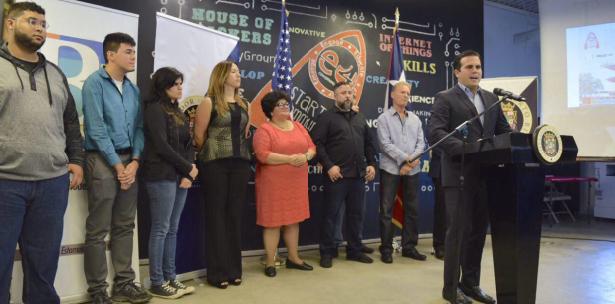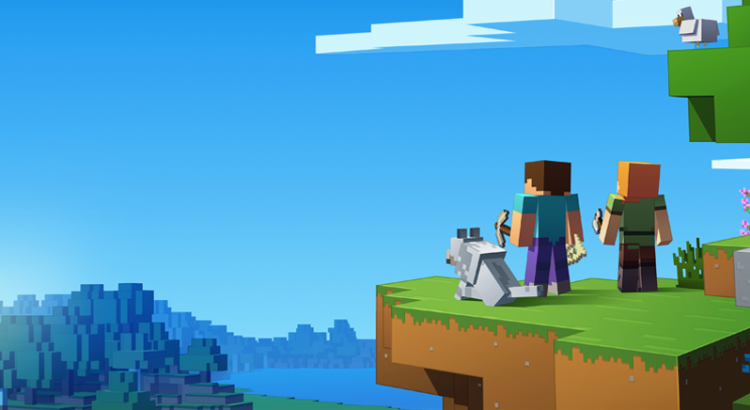Por: Genisson Silva Coutinho Y Luis F. Morán-Mirabal
“Los laboratorios virtuales son flexibles, permiten a los estudiantes modificar los valores de las diferentes variables estudiadas y explorar los resultados experimentales más rápido que en un laboratorio tradicional o remoto”.
Los estudiantes pueden mejorar sus habilidades y conocimientos a través de un laboratorio virtual realizando prácticas de forma segura muy cercanas a la realidad. Imagina poder utilizar un laboratorio virtual para aprender sobre células vegetales, realizar una evaluación nutricional mediante la composición corporal, aprender sobre aplicaciones enzimáticas de biotecnología, practicar electroterapia, o comprender el electromagnetismo, la óptica, y la mecánica mediante el uso de instrumentos virtuales. Las posibilidades son infinitas.
La educación a través de laboratorios juega un papel muy importante en el desarrollo de nuestros estudiantes (Sheppard et al., 2008). Más allá de los conceptos y los principios, los laboratorios ayudan a los estudiantes a desarrollar habilidades profesionales fundamentales tales como la solución de problemas, el diseño de aplicaciones, y la identificación de fallas (Feisel & Rosa, 2005; Wankat & Oreovicz, 2015). No obstante, el uso de laboratorios en la educación puede estar limitado por múltiples factores, los cuales incluyen el costo de los equipos, el tiempo requerido para realizar una práctica, y la infraestructura (Abdulwahed & Nagy, 2014; Achumba et al., 2013; Bhargava et al., 2006; Magana & Coutinho, 2017). Para reducir dichas limitaciones, los educadores constantemente buscan tecnologías emergentes que permitan contar con laboratorios más inclusivos, creativos, y efectivos. Entre estas tecnologías, los laboratorios virtuales se están volviendo muy populares en la educación de la ingeniería y las ciencias (Potkonjak et al., 2016).
“Los laboratorios virtuales ayudan a los estudiantes a mejorar sus habilidades emulando prácticas de laboratorio reales de forma segura en un ambiente digital”.

La literatura científica menciona múltiples ventajas de los laboratorios virtuales en comparación con los laboratorios prácticos tradicionales (de Jong et al., 2013; Heradio et al., 2016). En primer lugar, los laboratorios virtuales usualmente requieren una menor inversión y recursos. En segundo lugar, se pueden utilizar de manera remota. En tercer lugar, fomentan en los estudiantes el aprendizaje de conceptos y principios a través de simulaciones y representaciones de fenómenos abstractos. Por último, los laboratorios virtuales son flexibles y permiten a los estudiantes modificar los valores de las diferentes variables estudiadas y explorar los resultados experimentales más rápidamente que en un laboratorio tradicional o remoto. Una crítica común respecto a los laboratorios virtuales está relacionada con el uso de datos ideales que usualmente no reflejan la incertidumbre y matices del mundo real. Asimismo, estos laboratorios generalmente carecen del sentido de la realidad necesario para sumergir a los estudiantes en experiencias más auténticas.
Aunque muchos laboratorios virtuales se enfocan en desarrollar en los estudiantes el entendimiento conceptual de un fenómeno o teoría en particular (Hawkins & Phelps, 2013; Kollöffel & de Jong, 2013; Tatli & Ayas, 2013; Zacharia, 2007), en la mayoría de los casos, se descuidan las características asociadas con el equipamiento, la configuración, el entorno, y los procedimientos experimentales. El uso de laboratorios virtuales es apropiado en la mayoría de los cursos basados en la ciencia, generalmente resulta en mejoras para el aprendizaje equivalentes en comparación con los laboratorios prácticos tradicionales. Sin embargo, es importante considerar los aprendizajes que se deseen desarrollar en los estudiantes ya que de lo contrario este enfoque podría obstaculizar el desarrollo de habilidades fundamentales en algunas áreas de estudio como la educación de la ingeniería, habilidades tales como la comunicación, la colaboración, la seguridad, el diseño de experimentos, y el aprendizaje del fracaso.
Actualmente, impulsados por la pandemia de COVID-19, los laboratorios virtuales parecen ser omnipresentes en todos los niveles educativos (Glassey & Magalhães, 2020). Gracias al uso de laboratorios virtuales, muchas instituciones pudieron brindar una educación de calidad, incluso enfrentando las terribles consecuencias de la pandemia (Ray & Srivastava, 2020). No obstante, mientras que el uso de laboratorios virtuales ya no presenta límites en términos de aplicabilidad y usabilidad, se requiere un gran esfuerzo para crear nuevos laboratorios, que sean más realistas y capaces de desarrollar habilidades adicionales a la comprensión conceptual. Además, es fundamental explorar enfoques pedagógicos más contextualizados con los laboratorios virtuales. Se requiere más investigación para medir la eficiencia de aprendizaje de dichos laboratorios, identificar oportunidades, y definir tendencias para futuras investigaciones y desarrollos.
Para contribuir en dichos esfuerzos, el IFE Living Lab & Data Hub recientemente formalizó un convenio de colaboración con ALGETEC (una EdTech brasileña especializada en el desarrollo de laboratorios físicos y virtuales), para fomentar la innovación educativa a través del lanzamiento de dos convocatorias de investigación y desarrollo. Dichas convocatorias tienen como objetivo la medición del impacto derivado de introducir laboratorios virtuales multidisciplinarios en la educación superior, y la creación de recursos pedagógicos innovadores para el desarrollo de nuevos y disruptivos laboratorios virtuales. Si deseas conocer más acerca del IFE Living Lab & Data Hub y sobre nuestras convocatorias de investigación y desarrollo, puedes consultar aquí.
Hoy en día, ALGETEC ofrece un portafolio con más de 700 laboratorios virtuales para la enseñanza de Ciencias Naturales, Ciencias de la Salud, Ingeniería y Humanidades. Además, es la única empresa en el mundo que produce laboratorios físicos y desarrolla laboratorios virtuales, impactando a más de 600 mil estudiantes, y colaborando con más de 250 instituciones educativas públicas y privadas en América Latina, Norteamérica, y África. La filosofía de ALGETEC se centra en promover una mejor experiencia de aprendizaje mediante el desarrollo de laboratorios virtuales que se asemejan de manera cercana a las prácticas de laboratorio reales. Por lo tanto, todos los datos que utilizan en sus laboratorios virtuales se recopilan a partir de la realización de experimentos reales en laboratorios físicos. Si deseas conocer más acerca de esta destacada EdTech, puedes consultar aquí.
La principal ventaja de utilizar laboratorios virtuales es que los estudiantes están en un entorno seguro, lo que les permite practicar y cometer errores sin ningún riesgo. Además, los estudiantes pueden acceder a los laboratorios virtuales directamente desde su Sistema de Gestión de Aprendizaje (LMS), repetir los experimentos tantas veces como sea necesario y practicar en cualquier momento que sea necesario. En general, un laboratorio virtual funciona como un complemento del laboratorio físico, donde los estudiantes pueden comenzar aprendiendo y experimentando con procedimientos en un entorno digital, y luego continuar probando y desarrollando sus habilidades manuales en un laboratorio real. Así es cómo contribuyen los laboratorios virtuales para crear el futuro de la educación.
Acerca de los autores
Genisson Silva Coutinho (genisson@algetec.com.br) es el Fundador de ALGETEC “Soluciones Tecnológicas en Educación” en Brasil. También es Profesor Asociado y director del Departamento de Ingeniería Mecánica y Materiales en el Instituto Federal de Ciencia y Tecnología de Brasil. Genisson obtuvo su doctorado en Educación de Ingeniería en la Universidad de Purdue. Sus especialidades son la investigación en educación de ingeniería, la innovación educativa, el diseño y desarrollo de productos, el análisis de elementos finitos, el análisis de estrés experimental, la gestión del ciclo de vida del producto, la automatización y las tecnologías digitales.
Luis F. Morán-Mirabal (lmoran@tec.mx) lidera las convocatorias y proyectos de investigación basadas en tecnología en el IFE Living Lab & Data Hub. Luis F. obtuvo su doctorado en Ciencias de la Ingeniería en el Tecnológico de Monterrey. Ha impartido cursos de educación superior en el Tecnológico de Monterrey y ha trabajado en diferentes empresas coordinando áreas de Mejora Continua, Finanzas, Recursos Humanos, Planeación Estratégica, e Inteligencia de Negocios. Sus intereses de investigación incluyen la innovación educativa, la analítica del aprendizaje multimodal, y el uso de las tecnologías en la educación superior.
Referencias
Abdulwahed, M., & Nagy, Z. K. (2014). The impact of different preparation modes on enhancing the undergraduate process control engineering laboratory: A comparative study. Computer Applications in Engineering Education, 22(1), 110–119. https://doi.org/10.1002/cae.20536
Achumba, I. E., Azzi, D., Dunn, V. L., & Chukwudebe, G. A. (2013). Intelligent performance assessment of students’ laboratory work in a virtual electronic laboratory environment. IEEE Transactions on Learning Technologies, 6(2), 103–116. https://doi.org/10.1109/TLT.2013.1
Bhargava, P., Antonakakis, J., Cunningham, C., & Zehnder, A. T. (2006). Web-based virtual torsion laboratory. Computer Applications in Engineering Education, 14(1), 1–8. https://doi.org/10.1002/cae.20061
De Jong, T., Linn, M. C., & Zacharia, Z. C. (2013). Physical and virtual laboratories in science and engineering education. Science, 340(April), 305–308.
Feisel, L. D., & Rosa, A. J. (2005). The Role of the Laboratory in Undergraduate Engineering Education. Journal of Engineering Education, 94(1), 121–130. https://doi.org/10.1002/j.2168-9830.2005.tb00833.x
Glassey, J., & Magalhães, F. D. (2020). Virtual labs – love them or hate them, they are likely to be used more in the future. Education for Chemical Engineers, 33(January).
Hawkins, I., & Phelps, A. J. (2013). Virtual laboratory vs. traditional laboratory: which is more effective for teaching electrochemistry? Chemistry Education Research and Practice, 14, 516–523. https://doi.org/10.1039/c3rp00070b
Heradio, R., De La Torre, L., Galan, D., Cabrerizo, F. J., Herrera-Viedma, E., & Dormido, S. (2016). Virtual and Remote Labs in Education: a Bibliometric Analysis. Computers & Education, 98, 14–38. https://doi.org/10.1016/j.compedu.2016.03.010
Kollöffel, B., & de Jong, T. (2013). Conceptual understanding of electrical circuits in secondary vocational engineering education: Combining traditional instruction with inquiry learning in a virtual lab. Journal of Engineering Education, 102(3), 375–393. https://doi.org/10.1002/jee.20022
Magana, A. J., & Coutinho, G. S. (2017). Modeling and simulation practices for a computational thinking-enabled engineering workforce. Computer Applications in Engineering Education, 25(1), 62–78. https://doi.org/10.1002/cae.21779
Potkonjak, V., Gardner, M., Callaghan, V., Mattila, P., Guetl, C., Petrović, V. M., & Jovanović, K. (2016). Virtual Laboratories for Education in Science, Technology, and Engineering: a Review. Computers & Education, 95, 309–327. https://doi.org/10.1016/j.compedu.2016.02.002
Ray, S., & Srivastava, S. (2020). Virtualization of science education: a lesson from the COVID-19 pandemic. Journal of Proteins and Proteomics, 11(2), 77–80. https://doi.org/10.1007/s42485-020-00038-7
Sheppard, S.D., Macatangay, K., Colby, A., & Sullivan, W.M. (2008). Educating Engineers: Designing for the Future of the Field. Jossey-Bass.
Tatli, Z., & Ayas, A. (2013). Effect of a Virtual Chemistry Laboratory on Students’ Achievement. Educational Technology & Society, 16(1), 159–170. http://search.ebscohost.com/login.aspx?direct=true&db=eric&AN=EJ1016363&site=ehost-live
Wankat, P. C., & Oreovicz, F. S. (2015). Teaching engineering (2nd ed.). Purdue University Press.
Zacharia, Z. C. (2007). Comparing and combining real and virtual experimentation: An effort to enhance students’ conceptual understanding of electric circuits. Journal of Computer Assisted Learning, 23(2), 120–132. https://doi.org/10.1111/j.1365-2729.2006.00215.x
Edición por Rubí Román (rubi.roman@tec.mx) – Editora de los artículos Edu bits y Webinars del Observatorio- «Aprendizajes que inspiran» – Observatorio del Instituto para el Futuro de la Educación del Tec de Monterrey.
Fuente de la información e imagen: https://observatorio.tec.mx













 Users Today : 96
Users Today : 96 Total Users : 35459691
Total Users : 35459691 Views Today : 177
Views Today : 177 Total views : 3418149
Total views : 3418149